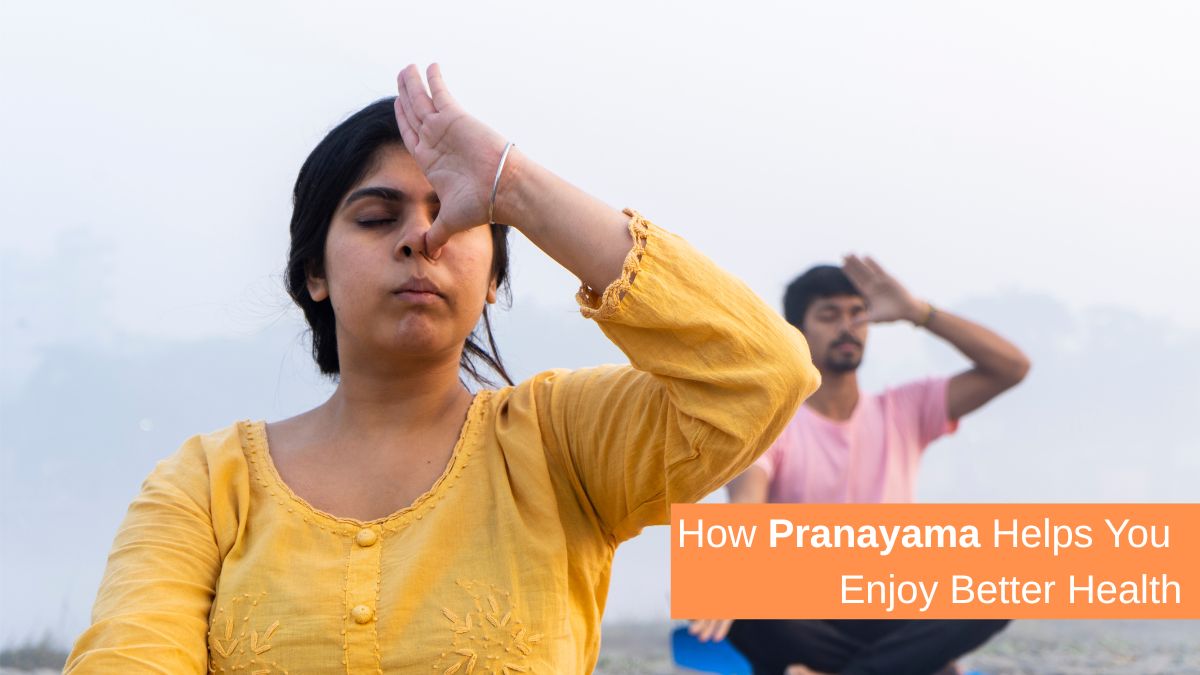
How Pranayama Helps You Enjoy Better Health
“Chale vate chale chittam nischale nischalam bhavet” is an old yogic text. It means that the breath controls the mind. When the breath moves, the mind moves, and when the breath is steady, the mind is steady. Does this ring a bell? It most probably takes you back to the realization that when you are angry, your breath is fast and shallow. But when you are calmer, your breath is slow and easy. This is what Pranyayama essentially is. It is the Ayurvedic or Yogic practice of controlling your breath along with the timing, duration, and frequency. The goal is to connect the body and mind for holistic healing.
For all those who are new to this concept, here is some quick trivia.
What is Pranayama?
According to WebMD,’ The word pranayama comes from two separate words: prana and ayama. Prana translates to breath, while ayama has many different meanings, including expansion, length, and rising.
In yogic beliefs, it is thought that you can control your inner force, also known as prana, through a pranayama practice. It may help you develop breath control and improve your mental well-being.’
The website quotes Hari Sharma, MD, professor emeritus at The Ohio State University College of Medicine. He says, “Prana is the breath of life, the breath that keeps you alive. When it goes out of balance, your mind, emotions, and physical body go out of balance, too. By doing certain breathing exercises, you can get things back into balance and regain your health.”
A typical Pranayama practice has three components:
• Inhalation of breath.
• Holding of breath.
• Exhalation of breath.
It involves different techniques such as:
• Alternate nostril breathing (nadishodhana)
• Victorious breath (ujjayi)
• Honeybee humming breath (bhramari)
• Bellows breath (bastrika)
The practice is ideally recommended early in the morning. Though it can be done anytime during the day or before bedtime to sleep soundly.
How does Pranayama enable you to enjoy better health?
- • It helps improve cognitive abilities- All the techniques of Pranayama have proved to enhance cognitive functions, especially the auditory and sensory motor skills. The improved abilities facilitate better coordination of movement, more ease in carrying out daily tasks, and increased problem-solving capacity and concentration by raising oxygen levels.
- • It increases the capacity of the lungs- The practice of holding breath increases the strength of the respiratory muscles and helps in resolving multiple lung-related issues that include quicker recovery from conditions like pneumonia and managing asthma. Thereby enabling you to enjoy a better quality of life.
- • Aids in quitting smoking- This may sound unbelievable, but the Pranayama practice helps you to reduce your cravings for lighting up a cigarette as it works on calming your mind and decreasing anxiety.
- • Helps reduce stress and regulates your emotions- Pranayama enhances mindfulness due to its meditative techniques involving breath focus and increasing awareness. This has been found to lower anxiety, stress levels, and aggressive behaviour. Moreover, mindfulness teaches you to live in the present moment without carrying the extra baggage of your unpleasant past or the worry of an uncertain future. People have vouched that just one session of the practice enables them to considerably calm down and decrease their negative feelings.
- • Regulates high blood pressure- The bee breathing technique in Pranayama reduces high blood pressure levels by lowering stress levels. Once the high blood pressure is managed, you are at a lower risk of experiencing health conditions such as stroke and coronary heart disease. Experts say that since Pranayama engages both the body and the mind, it also greatly aids in reducing the episodes of migraine, psoriasis, and ulcers, which are classified as psychosomatic disorders.
- • Improves sleep quality- When you focus on your breath, it leads to deep relaxation, which in turn significantly reduces insomnia. A study conducted in 2019 revealed that Pranayama can help you with sleep apnea by reducing snoring.
- • Improves digestion- The National Institutes of Health(NIH) states that ‘Researches show that pranayama is also helpful in improving the digestive activity by boosting enzyme action and promoting clearance of subtle metabolic wastes from the body.’ This is made possible by the deep breathing that activates the parasympathetic nervous system.
How to learn Pranayama?
The practice is best learned with a certified yoga trainer who can guide you with the right techniques and methods based on your lung capacity, health, and medical conditions. Experts warn that practicing Pranayama on your own without proper guidance can accelerate certain health conditions.
The respiratory rehabilitation program actively includes Pranayama for effective management of conditions like asthma or Chronic Obstructive Pulmonary Disorder(COPD). The therapy is carried out by skilled and experienced professionals and has a positive effect on the shortness of breath, lung capacity, and stress levels.
Related
BY: Sukino
COMMENTS: No Comments
